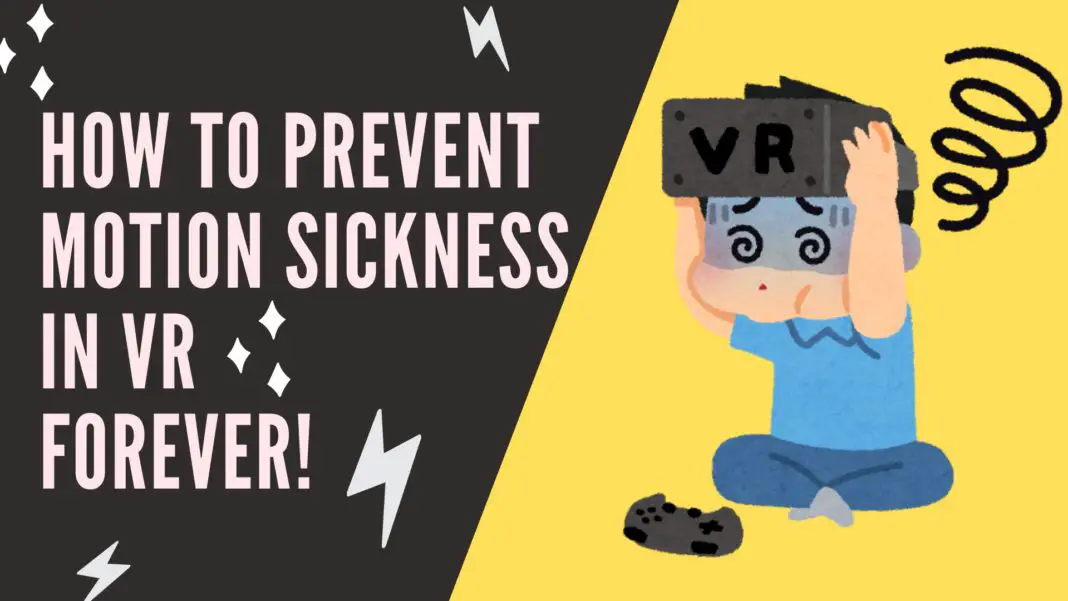9 Ultimate Tips on How to Prevent Motion Sickness in VR Forever!
9 Absolute Best Tips and Practical Advice to Avoid, Cure and Prevent Motion Sickness in VR and How to Develop and Make Your ” VR Legs” Stronger!
Motion sickness is one of the biggest reasons that discourage people from using virtual reality headsets. And that’s a shame because a lot of people think they are not able to get better.
Motion sickness roughly affects four in ten of us and now it seems a lot of VR newcomers out there are jumping straight into intense games and experiences like Pavlov, Onward and Dirt Rally to name a few.
And although these games can be extremely fun, there can be very intense for those that haven’t yet got their VR legs a bit.
VR legs are by the way what the community calls the resistance to motion sickness when playing VR games.
But the good news is that you can get better at it. And I’m saying this from personal experience; I don’t get as sick as often anymore now.
So I wanted to share my experience with my VR army and give you my 9 tips on how to prevent motion sickness in virtual reality and what I did to make my VR legs stronger and what I do to keep on preventing motion sickness.
If you’ve ever felt motion sick before, I hope that these 9 tips will help you out as well.
A MUST Read : FREE VR Games that are Better than Paid VR Games
What Causes Motion Sickness in Virtual Reality?
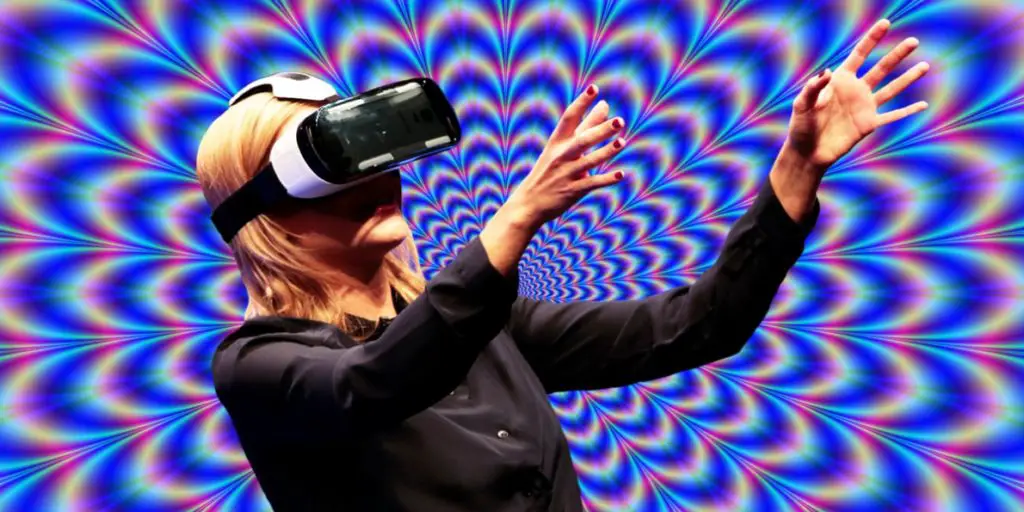
Motion sickness occurs when your eyes perceive that you are moving. However, your body is not.
So for example, if you are sitting down or standing in one spot, but using the joystick of your controller to move around in a VR game, it causes an inconsistency which can cause motion sickness.
This sensation of motion sickness stems back to the body’s instinctual reaction to where the body believes that you’ve been poisoned and that you’re hallucinating and therefore you should get rid of that poison by vomiting it up.
It is the same kind of feeling that you can get from being carsick. You can feel dizziness, headache, fatigue, vertigo but the most common symptom is nausea.
If you don’t resolve this, you will most likely vomit, or you can feel sick for hours even after you put down the headset.
So, in this post, I’ll be giving you 9 practical pieces of advice and tips on how you can prevent motion sickness in virtual reality and start getting the most of your new VR headset.
So Here are the 9 Tips on How to Avoid, Reduce and Cure Motion Sickness in VR
#Tip 1. Learn When to Take a Break.

My advice is, at first play short sessions of maybe 10 to 15 minutes and take regular breaks to keep yourself hydrated with plenty of water.
If you take anything away from this post is this: if you start to feel hot or you starting to feel like cold sweats or dizziness or nausea don’t try to push through it because once you go over the edge with motion sickness there’s just no turning back and you’ll probably feel rough for hours on end.
I learned that lesson the hard way so please don’t push through if you’re starting to feel the effects.
Stop straight away, take a break, get something to drink and eat, and then just wait until all the effects have completely disappeared.
So take a break before it gets worse and when you recover, you can continue playing again. Taking breaks is also what has given me stronger VR legs.
By taking it slow and playing short sessions first, I was able to play longer sessions over time. But let’s continue, if you started feeling motion sick in a VR game, I recommend trying out this second Tip after taking the break.
#Tip 2. Set Your IDP Correctly.
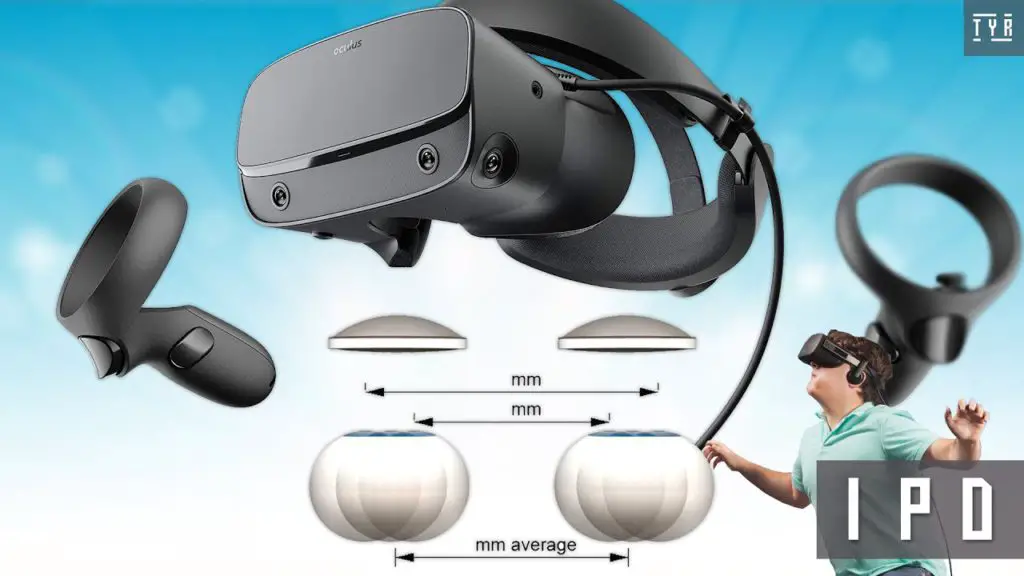
The second Tip is to ensure that your IDP is set correctly. In every VR headset, you can set your IDP, short for interpupillary distance, to match your eyes.
Your IDP is the distance between the centre of the pupils of your eyes. A lot of newcomers in VR are usually not aware of this.
Now some headsets like the oculus go have a fixed IDP to accommodate the average by IDP range but with the vive, psvr, and oculus rift you’ll need to ensure it’s set correctly for the most comfortable experience.
This is an important tip because if you don’t match the IDP in VR, then you will not only have a blurry display, but it could also cause motion sickness.
So if you don’t know your IDP, you can measure it yourself using mobile apps or using an old school ruler, although this might not be as accurate.
You can get an accurate measurement by trying to get your eyes measured at a prescription glasses store. Then if you know your number, you can set it on your headset.
On the Valve Index, HTC Vive devices, oculus rift, and oculus quest, there is a physical slider usually below the headset that you can use to set it. On the rift s, you can set it in the Oculus app by going to the settings.
#TIP 3 . Change the Comfort settings
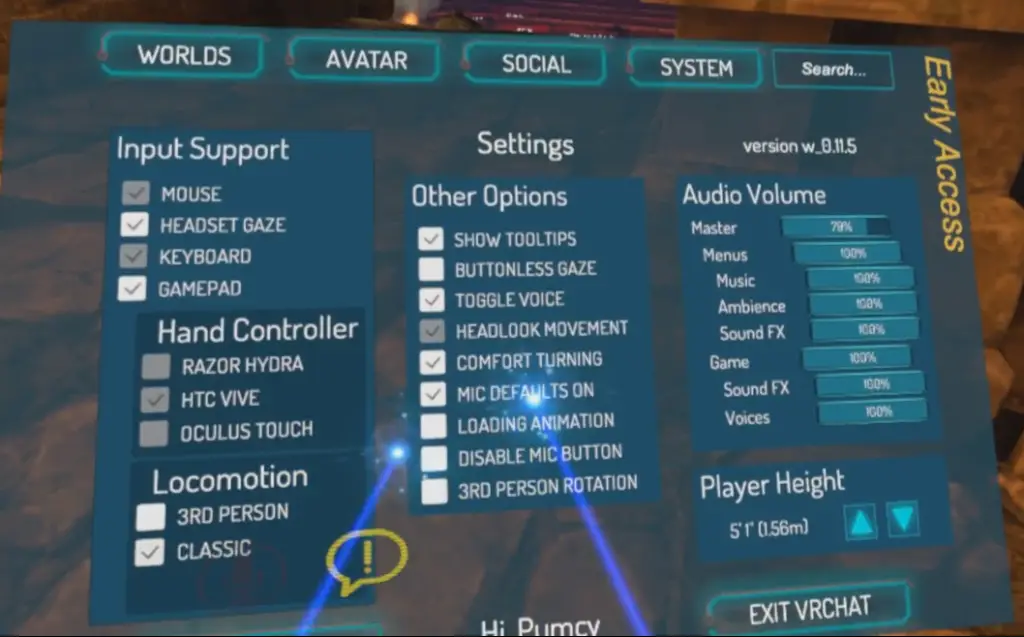
Every VR game usually has Comfort settings that you can change. You’ll most likely find it under VR settings or Comfort settings if you open up any menu in any VR game.
Check out every setting to see what works best for you. Afterwards, you’ll be able to apply it to other games. For example, personally, I cannot take smooth turning or locomotion that is not head relative.
So in every game, I set turning to snap instead of smooth and smooth locomotion to head relative instead of the hand relative.
So if you took a break as I mentioned in Tip number 1, I recommend checking out the VR settings after you took that break to see if there is something different that you can do in that game to prevent the thing that is causing the motion sickness.
#Tip 4. Check Comfort Ratings

The next tip is to check out the game’s comfort ratings. On the oculus rift, go and quest, you’ll get comfort ratings on the store page of each game and they’ll fall into one of three categories: comfortable, moderate, and intense.
Unfortunately, the other platforms such as steam or psvr don’t have this rating right now so I would recommend diving into the reviews of the game to see what players are saying about the game’s comfort levels.
I would love to see in the future a standard where everyone has to adhere to that show’s comfort levels of VR games because I think it is really important especially for VR newcomers.
So at first, of course, I’d recommend playing some comfortable games where you don’t actually move in-game that much and my favourites to recommend to newcomers are beat saber and superhot both of these games are really fun and don’t use any in-game locomotion.
Let me know your recommendations for comfortable games to play in the comments down below once you’re used to playing in VR with comfortable games then you can work your way up to games that feature teleportation locomotion systems.
Such as Arizona sunshine and Robo recall are excellent examples of fun teleportation games.
I would also recommend physically turning in your play space when playing games that require you to turn 360 instead of using a snap or smooth turning if you can I know you might get tangled up with wires a little bit but you’ll definitely feel more comfort most VR games out there.
#Tip 5. Turn a Fan on While Playing
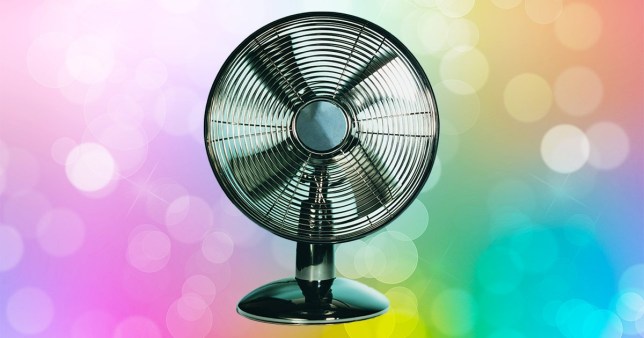
This is another Tip I got from a reader, which is to put a fan on me while playing VR games.
Put the fan high enough so you can feel the wind while playing. Maybe it has the same effect as when you get carsick, and people open the window for you. I’m not sure but it helps!
#Tip 6. Eat Some Ginger.

Ginger is a natural remedy for motion sickness, so it’s worth trying it out. Ginger has always been referred to as an alternative medicine for motion sickness and I found it in the early days it really helped me out.
Most stores stock it and it’s super cheap to pick up so grab yourself some ginger ale and enjoy some VR. There are a lot of forms of ginger; you can get ginger ale or make tea with fresh ginger.
Or you can even find ginger candy to chew on. It should help during playing or even after you get motion sick, consuming some ginger can help you recover sooner.
#TIP 7. Look at your setup.
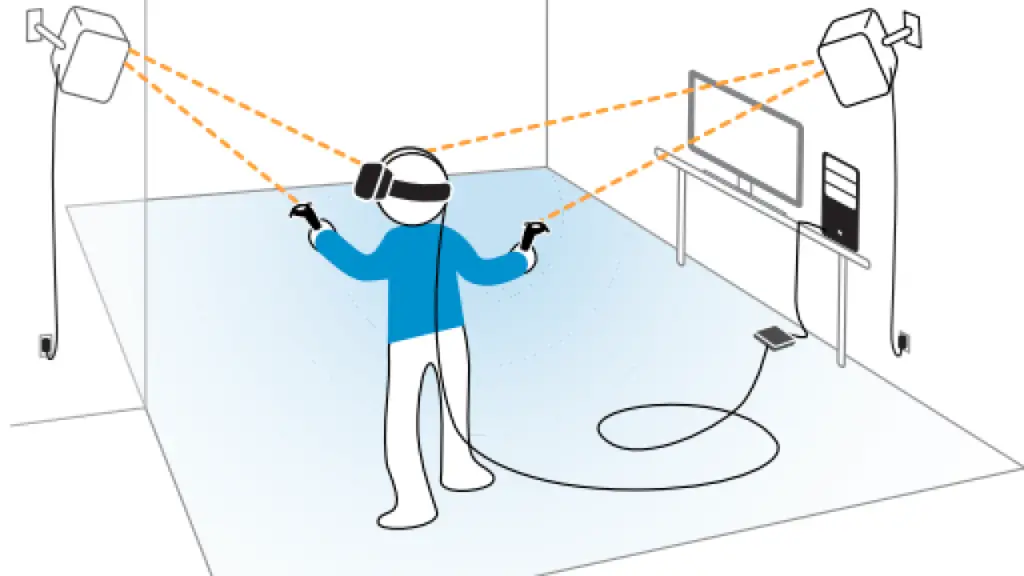
Check your tracking setup and computer setup before starting a game.
Is your PC able to handle a VR game at a decent frame rate? And is your tracking setup done correctly, so you don’t get any tracking occlusions?
Loss in tracking causes weird display problems that can instantly cause motion sickness, so this is something that needs extra care.
#TIP 8. Try out a travel anti-nausea wrist band.

What it does is, the plastic stud present on the band, puts pressure on an acupuncture point of each wrist that has been proven to help against motion sickness.
This point is the Nei-Kuan point. To find this point, place the middle three fingers of your right arm on the back of your left wrist.
Your Nei-Kuan point will be right below your index finger. If you press that point with a finger and you feel a slight sensitivity or tingling, then you’ll know that you found the right spot.
Put the wrist bands on this spot on both arms before you feel motion sickness for it to help. I have never known about this solution until a member of the “VR Army” contacted me, so I bought it to try it out.
It might not work for everybody though, but you can find a pair of these for about 5 dollars on Amazon, so I think it is worth a try.
Here’s the link if you to check it out: Anti Motion Sickness Band
#TIP 9. Check your frame rate.
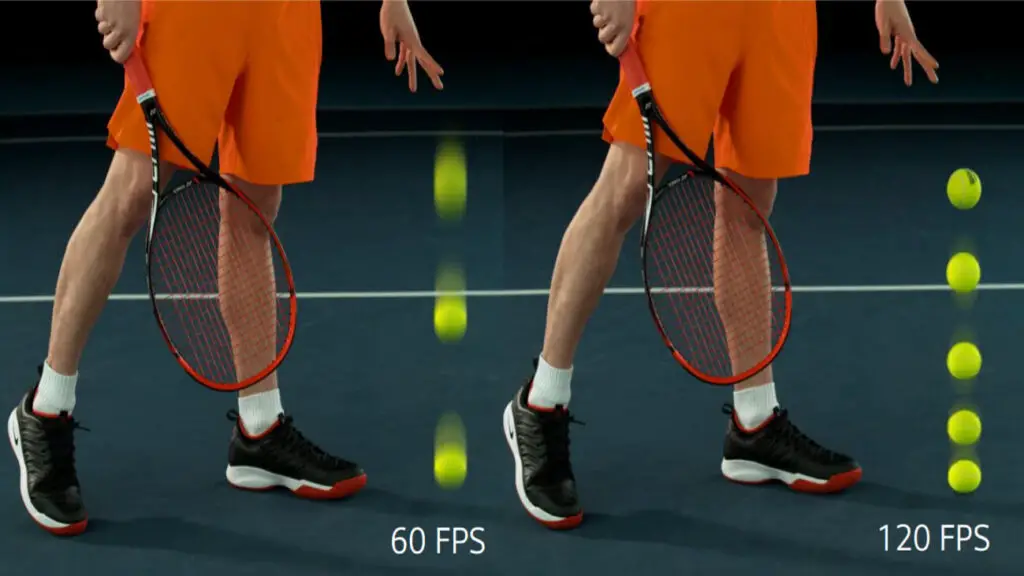
If a game causes frame drops, you’ll most likely get motion sick from it.
So if you just bought a new game and are starting to feel weird, then check the frame rate first. In SteamVR, you can check it by right-clicking the SteamVR window > Settings > Video > Advanced Frame Timing.
Here, you’ll see a green area and some other lines. If the lines and movements stay below this green area, then you’re fine. If the purple stuff goes above the green area, it means your framerate is not up to par.
You can also download SteamVR Advanced Settings to check the reprojection ratio. Basically, the lower this number, the better the framerate.
On Oculus, you can check your frame rate by opening the Oculus Debug Tool which you can find in your Oculus install folder under Support and then oculus-diagnostics.
Launch it before starting a game, then set the Visible HUD to Performance. This will show a frame rate graph in-game.
If you see that you are getting frame drops or low frame rates, then check if you can lower the graphics settings of the game, decrease any supersampling, or maybe you’ll have to update your graphics drivers.
Suggested:
Top 13 Best Fitness VR Games for a Mix of Fun and Burn | VR Fitness
So there we have it that some advice and practical tips on how to prevent motion sickness in VR. Those were the things I do or did to help me get my VR legs.
I have been playing games in VR for almost 2 and a half years now. And I was prone to motion sickness. I have laid on the couch many times before trying to get over that awful nausea.
Do you have any other tips and tricks for others to prevent motion sickness? Comment it down below and let’s help each other out!
let me know if any of these tips were useful to you in the comments down below I’d love to know even if you were a VR veteran.
Many in the VR industry are striving to make VR as comfortable as possible as ideally in the future we want a system that anyone can access straight away without expert seeing any motion sickness at all.
Check out our Other Posts :
Synth Riders “Spin Mode” adds 90, 180, and 360 degrees of movement in every song
Does SUPERHOT: MIND CONTROL DELETE have VR Support?
Alien Isolation VR – How to play Alien Isolation in VR for Rift, index…
Read Next:
How to Sideload Oculus Quest Using SideQuest: Windows & Mac


